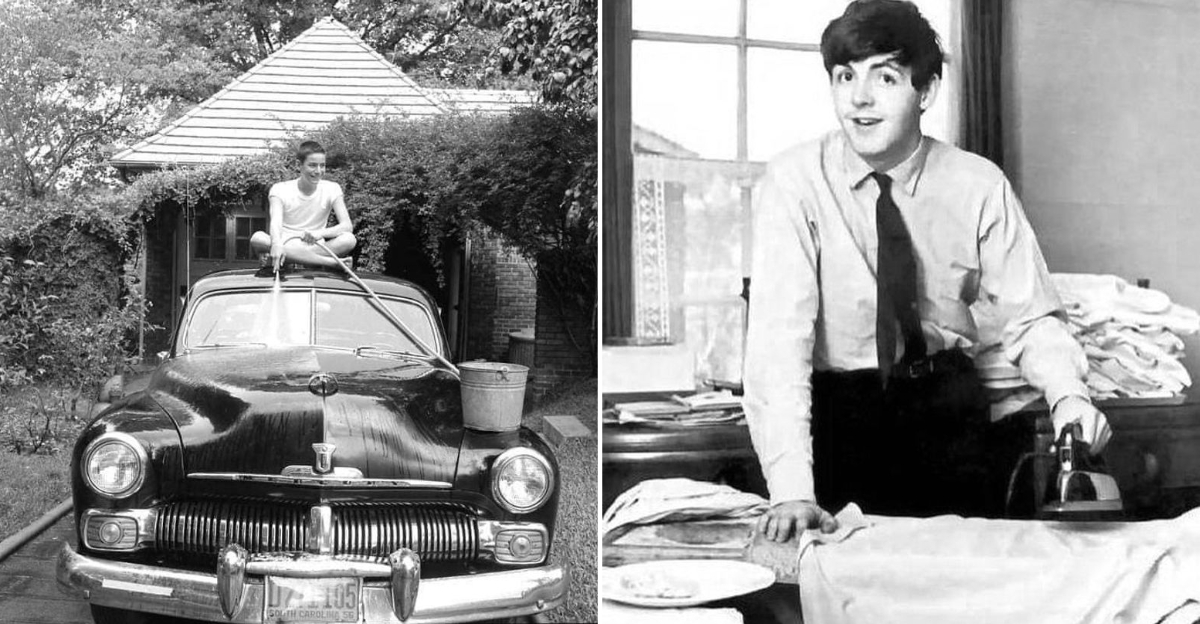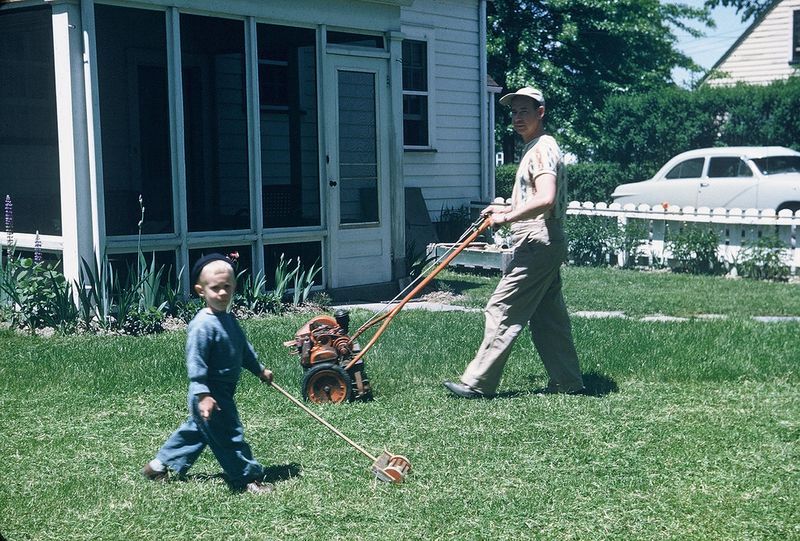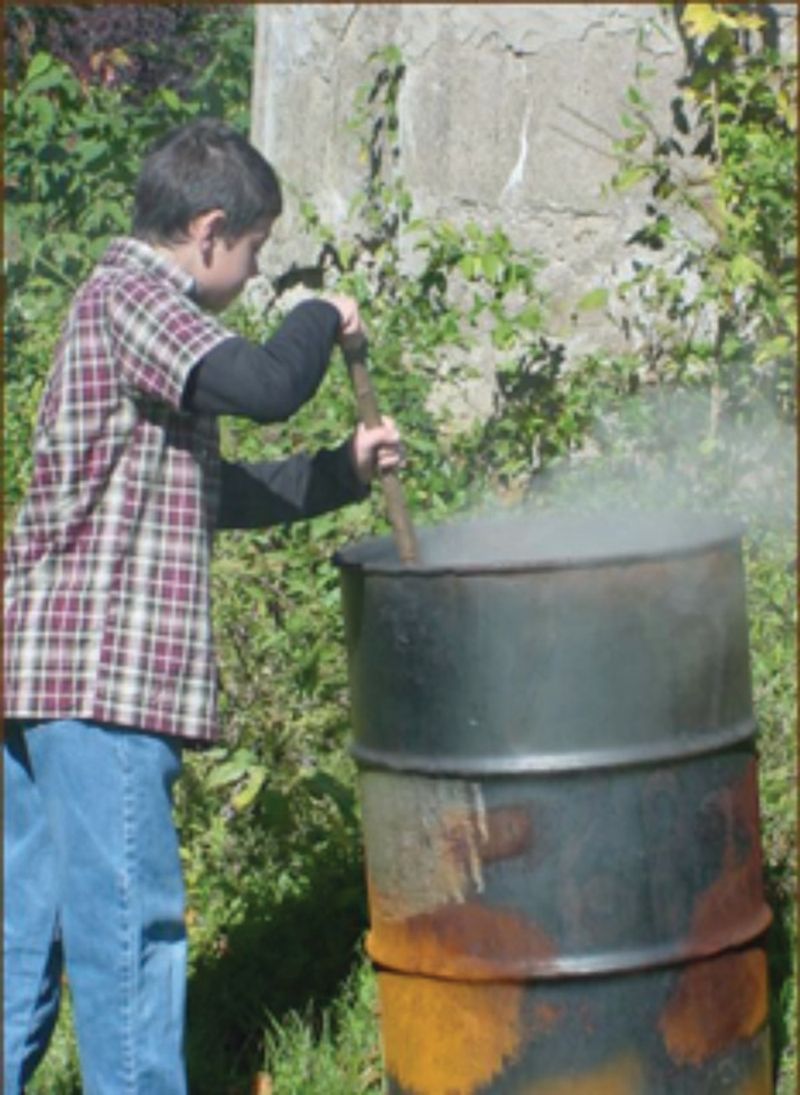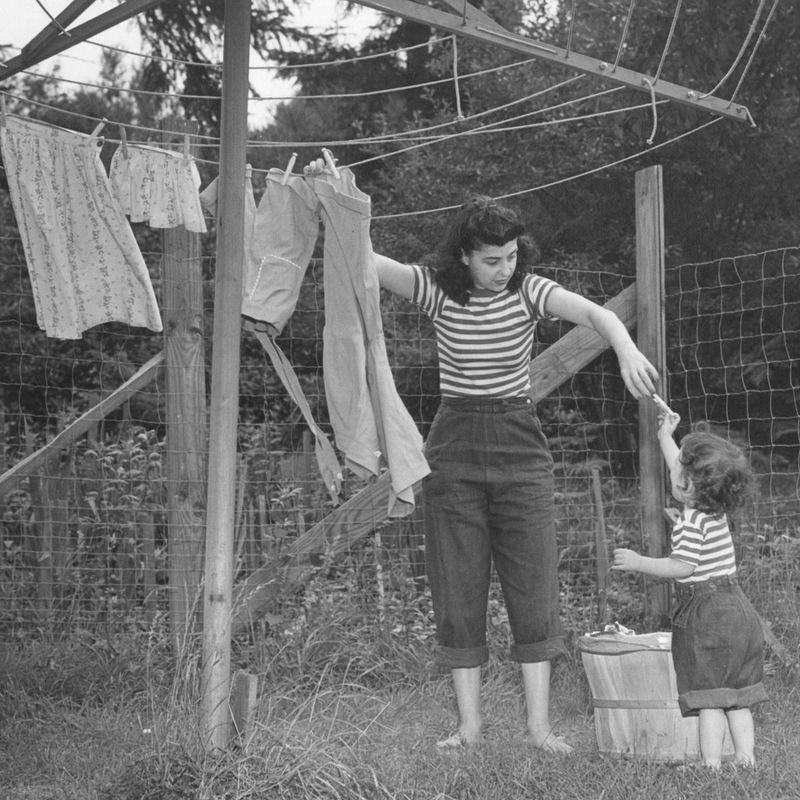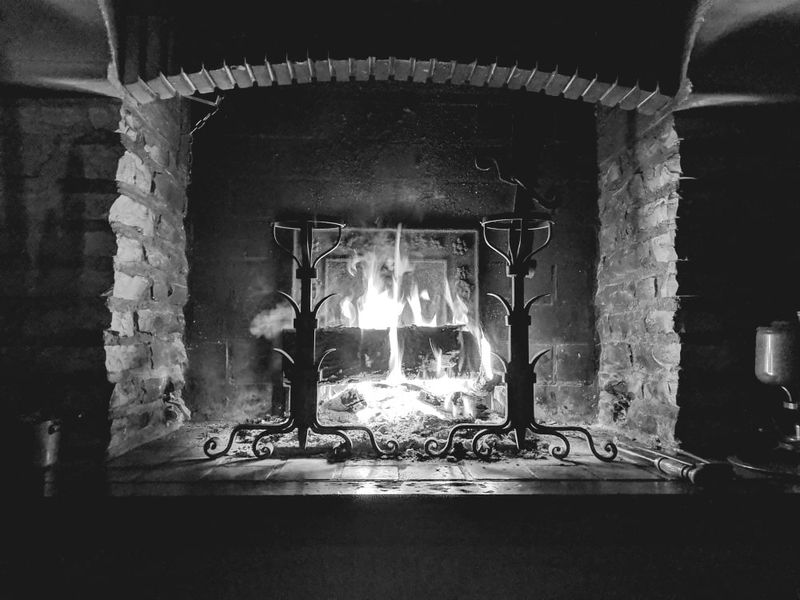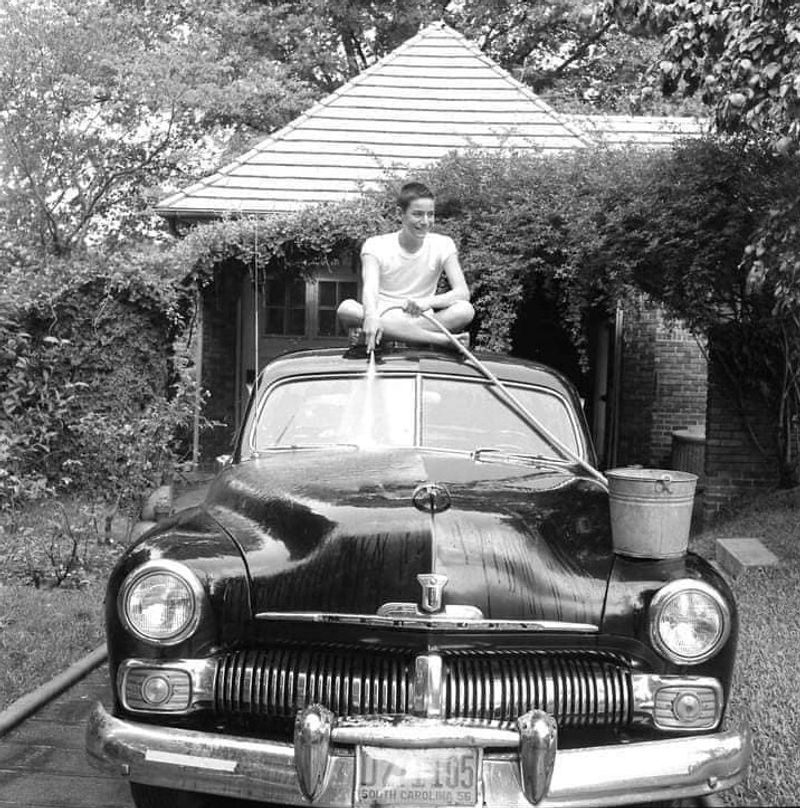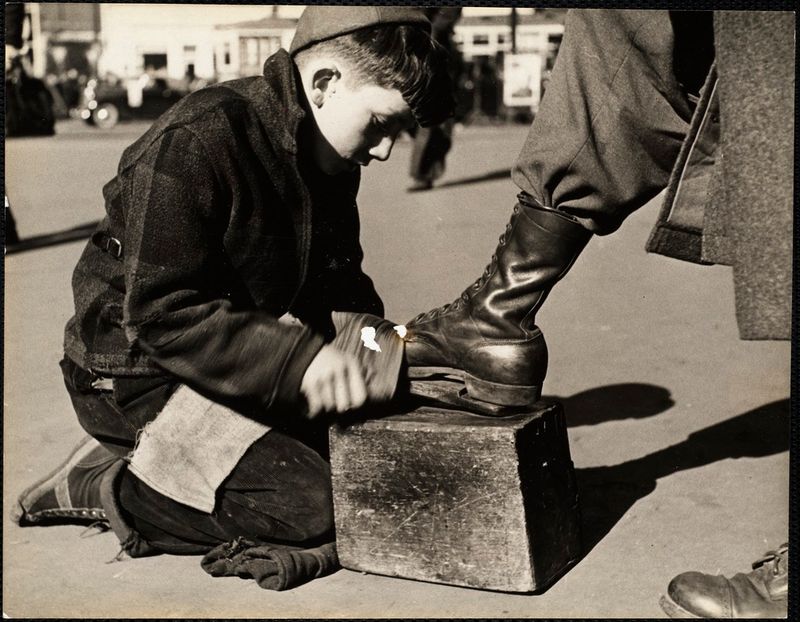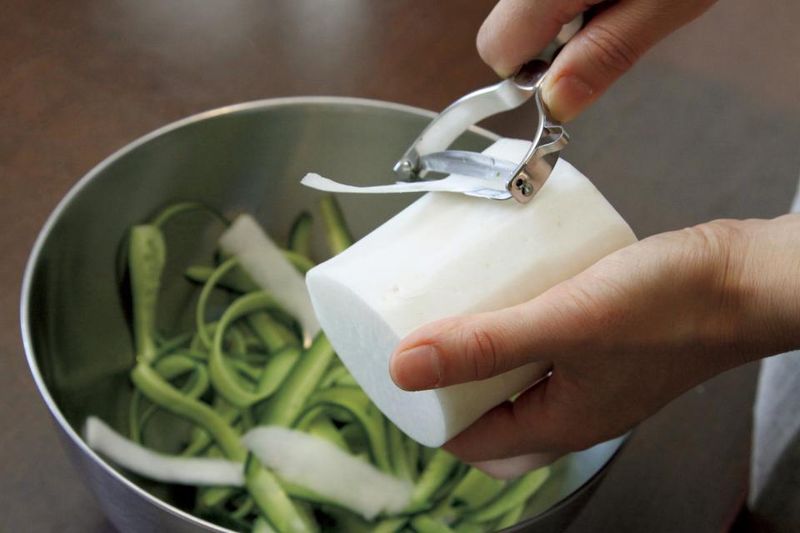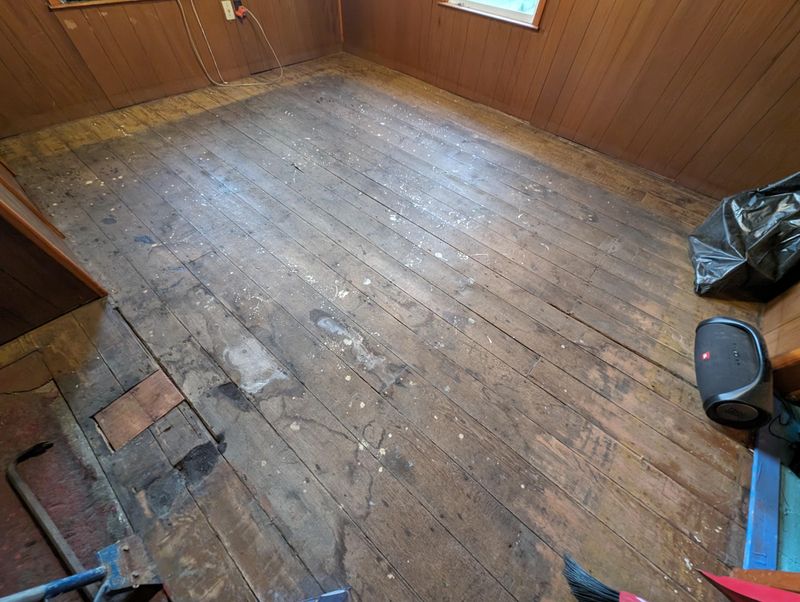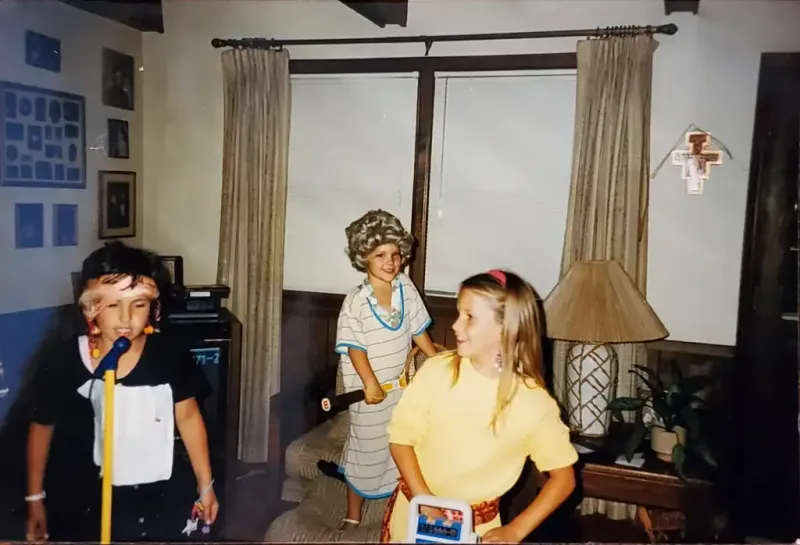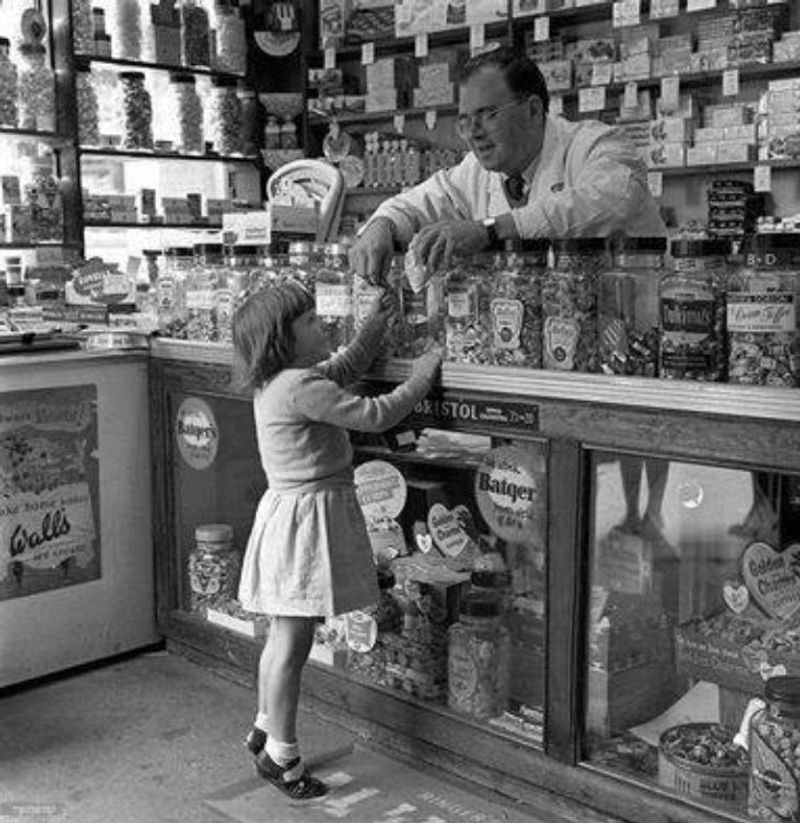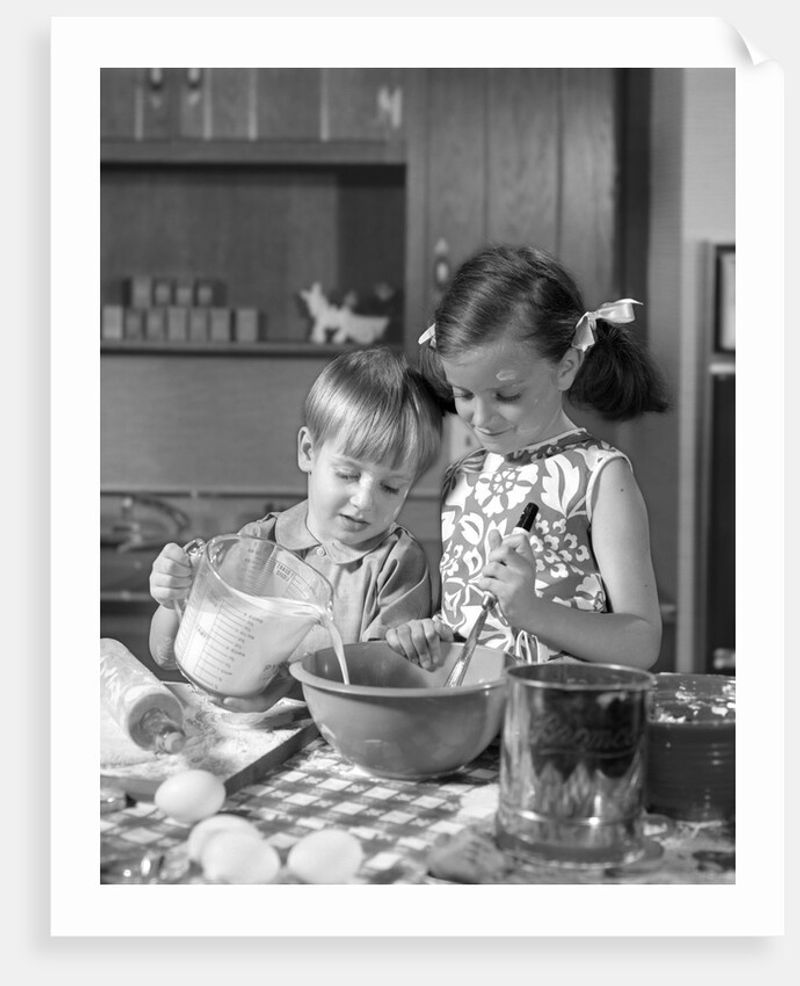Back in the 1960s, childhood wasn’t all cartoons and soda fountains—it came with a long list of daily responsibilities. Kids were expected to pitch in, often with chores that seem unthinkable (or downright dangerous) by today’s standards. Here are 13 chores that ’60s kids did without question—chores that would make modern parents raise an eyebrow (or call child services).
1. Mowing the Lawn—with a Blade-Only Push Mower
In a world before power mowers, children often faced the daunting task of mowing the lawn using only a heavy, manual reel mower. It wasn’t just sheer force; it required skill to keep the mower from jamming. Many kids developed a real knack for it, their small frames working tirelessly under the sun. The exertion was immense, the satisfaction greater. Parents trusted their kids with this demanding task, showcasing a level of responsibility that seems rare today.
2. Burning the Trash in the Backyard
Before recycling became routine, burning trash in the backyard was a commonplace chore. It was a hazardous chore, with the ever-present risk of getting too close to the flames or inhaling smoke. Yet, it taught kids about responsibility and managing waste. The sight of smoke billowing from backyards was normal, a testament to a different era. Children’s involvement in such activities might shock today’s parents.
3. Hanging Laundry on the Line
Hanging laundry on a line was more than a chore—it was a ritual. For a child in the ’60s, this task involved carrying a basket overflowing with wet clothes to the backyard. The art of securing each garment with clothespins, while dodging bees or unexpected rain, was a skill in itself. It taught patience and diligence. Watching clothes sway in the breeze was a communal experience, with neighbors often exchanging greetings over the fence. Today’s dryer-dependent households might find this relic of the past fascinating.
4. Ironing the Family’s Clothes
Ironing in the ’60s wasn’t just for adults. Young children were frequently seen smoothing out wrinkles from shirts and slacks. They mastered the distinction between “starch” and “no starch,” a detail lost on modern wrinkle-free fabrics. Each stroke of the iron was a testament to their growing skill. This chore wasn’t just about neatness; it was a lesson in precision and care. The smell of fresh laundry mixed with hot steam was a common household scent, marking an era when everyone chipped in to present their best selves.
5. Cleaning Out the Ashes from the Fireplace or Wood Stove
In households relying on fireplaces or wood stoves, cleaning out ashes was a daily necessity. Children, often resembling chimney sweeps, took on this grimy chore. Armed with a metal bucket and scoop, they would carefully remove the ashes, a task both messy and meticulous. The ritual of clearing out the fireplace was a lesson in diligence and attention to detail. It was a task that left them with soot-covered hands and faces, a badge of their contribution to family warmth and comfort.
6. Washing the Family Car by Hand—Every Weekend
Washing the family car by hand was a weekend staple. Kids would gather buckets, sponges, and hoses, transforming the chore into a lively event. It was more than just cleaning; it was bonding time. The reflection of suds on metal under the sun was a sight to behold. As each child scrubbed tires and polished windows, they learned the value of teamwork and pride in their family’s vehicle. This ritual, with splashes of water and laughter, remains a cherished memory for many who grew up in that era.
7. Polishing Shoes for School and Church
Polishing shoes was a task of pride and necessity. Children took to this chore with brushes and cloths, ensuring every pair was spotless for school or church. It was an exercise in thoroughness, where even the smallest scuff was unacceptable. The rhythmic motion of the brush, the transformation of dull leather to glossy shine, was satisfying. This chore instilled a sense of pride in appearance, a value deeply rooted in the era. Today’s casual footwear culture may overlook this once-essential skill.
8. Peeling Mountains of Vegetables for Dinner
In a time without pre-packaged sides, prepping vegetables was a family affair. Children often crowded around the kitchen table, peeling potatoes or snapping beans. It was a time-consuming task, demanding precision and patience. Each child learned to handle a peeler like a pro, contributing to the evening meal. This chore was more than prep work; it was an opportunity for storytelling and laughter. As vegetables piled up, so did the camaraderie, turning a mundane task into a cherished family tradition.
9. Scrubbing Floors—On Their Knees
Scrubbing floors on hands and knees was a true test of perseverance. Children, armed with rags and buckets, would tackle kitchen floors with determination. The act of scrubbing by hand ensured every corner was spotless, a testament to their dedication. This task taught resilience and the value of hard work. Despite the physical demand, it was often accompanied by songs or stories, lightening the mood. While modern households rely on mops and vacuums, this bygone method reflects a time when cleanliness was paramount.
10. Babysitting Siblings (for Hours)
Babysitting siblings was a hefty responsibility placed on the shoulders of older children. They handled everything from meal preparation to tantrum management. This task honed leadership and patience, as they navigated the challenges of caring for younger siblings. The weight of responsibility was matched by the trust placed in them by their parents. Games, stories, and the occasional squabble filled the hours, turning a simple babysitting task into a lesson in family dynamics. Today’s reliance on professional sitters contrasts sharply with this hands-on approach.
11. Walking to the Store Alone to Pick Up Groceries
Walking to the store alone was a rite of passage. Children, entrusted with money and a list, ventured into the neighborhood to fetch groceries. This task demanded street smarts and responsibility. The journey, often filled with familiar sights and friendly neighbors, was a mark of independence. It taught children about budgeting and making choices. Returning home with the right items was a source of pride. In an age of delivery services and parental supervision, this level of freedom and trust is rare.
12. Cleaning the Bathroom—To Sparkling Standards
Bathroom cleaning was a task demanding meticulous attention. Children scrubbed sinks, toilets, and tubs until they gleamed. The use of powerful cleansers without gloves was a common practice, showcasing a casual disregard for hazards. This chore taught precision and thoroughness, as any overlooked spot meant a redo. The satisfaction of a sparkling clean bathroom was a reward in itself. Modern concerns about chemical exposure highlight how times have changed, but the discipline and pride instilled remain timeless values.
13. Making Dinner When Mom Was Working Late
Making dinner was a significant responsibility for kids when their parents were occupied. Young teenagers stepped up, using family recipes to prepare meals. This task taught culinary skills and time management, as they juggled ingredients and cooking times. The aroma of a home-cooked meal filled the air, signaling a completed task. It was more than just feeding the family; it was an act of love and responsibility. In today’s fast-paced world, such duties are often outsourced, but the skills learned endure.
